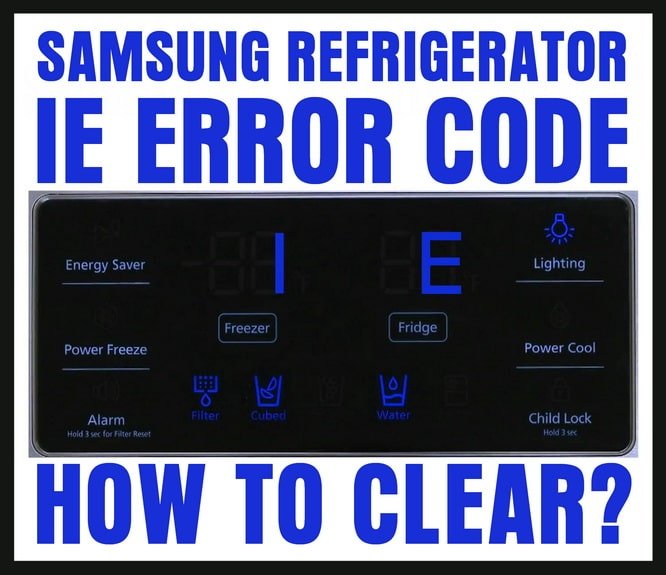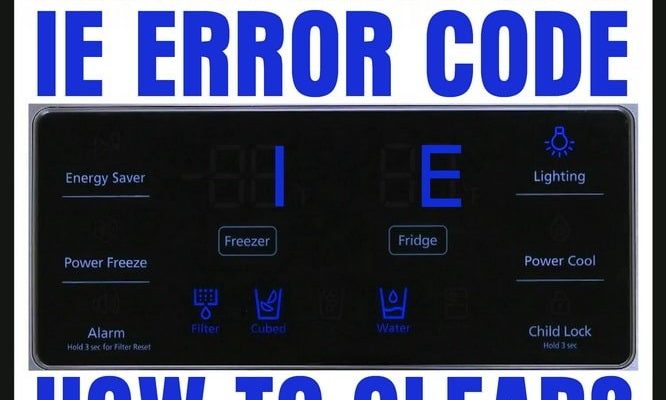
Error code “Le” might sound cryptic, but it’s actually doing you a favor. It’s like your refrigerator is waving a red flag, saying, “Hey, there’s something you might want to check out here!” Typically, this message hints at a water leakage issue, which can stem from a leaky water valve, a clogged or frozen water line, or a malfunctioning ice maker, among other things. Luckily, you don’t need to be a tech wizard to prevent this code from appearing. With a bit of knowledge and some proactive measures, you can ensure your fridge stays in top condition, just like a car with regular oil changes.
Understanding the Causes of Error Code Le
When you see the error code Le on your Samsung refrigerator, the first thing to remember is that it’s related to water leakage. But where exactly could this leak be coming from? It’s almost like tracing a water trail in your home to figure out where it’s originating. One common cause is a faulty water inlet valve, which is like a gateway controlling the flow of water into your fridge. If this valve doesn’t close properly, water can trickle where it shouldn’t, eventually triggering the error.
Next up, let’s talk about the water lines. Picture them as the plumbing of your fridge; if they’re clogged or frozen, it’s like having a backed-up sink. This can prevent the proper flow of water, leading to leaks and—surprise, surprise—the dreaded Le code. Moreover, sometimes the issue might lie with the ice maker. If it’s overfilling the ice tray or not functioning properly, it can cause water to spill over, creating a mess that your fridge’s sensors will detect.
Now, you might be wondering, what happens if I ignore these signs? Well, continual leaks could lead to more significant issues, like mold buildup or even water damage to other parts of your appliance (or kitchen floor!). It’s much better to tackle these issues head-on. In the next section, we’ll delve into practical steps to keep these problems at bay and maintain a harmonious relationship with your refrigerator.
Practical Steps to Prevent Future Occurrences
So, how do you ensure that the error code Le doesn’t become a recurring nightmare? It all starts with regular maintenance and care. Think of your refrigerator like a well-oiled machine; it needs occasional check-ups to continue running smoothly. One of the simplest ways to prevent water leakage is by regularly inspecting the water inlet valve. Ensure that it’s not only working correctly but also closing tightly. Sometimes, a minor adjustment is all it takes to prevent a drip from turning into a flood.
Additionally, pay special attention to the water lines. You don’t have to be a plumber to do this—just ensure they’re free from obstructions that might prevent water from flowing properly. If you notice any build-up that could lead to a blockage, consider gently cleaning it out. This proactive approach is akin to clearing leaves from a gutter before they cause an overflow.
When it comes to the ice maker, keeping an eye on its functionality is key. Ensure it’s not overfilling the tray—if it is, you might need to tweak the settings or check for any components that need repair. This preventive measure not only keeps your ice maker in top-notch condition but also forestalls unnecessary leaks.
Regular Maintenance Tips and Tricks
Prevention is always better than cure! By adopting some regular maintenance habits, you can keep your Samsung refrigerator in tip-top shape, thus avoiding the dreaded Le error code. Start by regularly cleaning around the water connections and the water filter. Think of this as exfoliating your fridge’s water system—a little regular attention can prevent build-up and clogs, much like keeping your skin clear and healthy.
How about those filters? They’re the unsung heroes of your fridge’s water system. Changing the water filter every six months ensures clean water flow and prevents any blockages that might cause leaks. If it feels like a lot to remember, think of it like switching out your toothbrush every few months—it’s a small task with big benefits.
Finally, routine check-ups of the entire refrigerator system can also go a long way. Listening for unusual noises, ensuring the fridge is level so water flows correctly, and checking the doors seal tightly can prevent a range of issues. By consistently nurturing your refrigerator like this, you’re less likely to encounter surprise error codes that could disrupt your day.
In the end, treating your refrigerator with care and attention ensures it remains a reliable part of your kitchen, quietly doing its job and keeping your food fresh. With these insights and tips, you’re now armed with the knowledge to prevent the Le error code and keep your Samsung fridge in peak condition. Happy cooling!
